It might be the most well-known, but Stonehenge doesn ’ t have the monopoly on stone circles in the UK. As the summer solstice approaches, we take a look at some of our favourite hidden spiritual spots from around the country.
Rollright Stones, the Cotswolds
At the southernmost tip of Warwickshire, in the tiny village of Long Compton, these stones might not have the grandeur of Stonehenge but they have some fun stories worth mulling over.
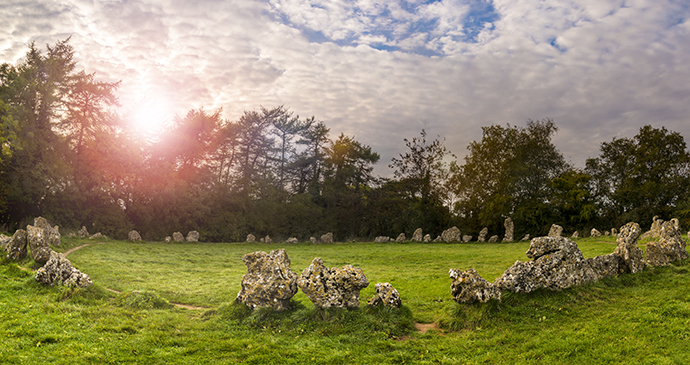
There are three sets of stones: on one side of the road that divides them is a circle of stones known as the King’s Men and, some yards from these, another group of stones huddled together and known as the Whispering Knights. Then, opposite the King’s Men is the slender, yet crooked figure of the lonely King Stone.
Boscawen-Un, Cornwall
The perfectly preserved Boscawen-Un stone circle is, local farmers say, occasionally still used for pagan celebrations and rites. This is no surprise – the local post office in St Buryan has a card in the window advertising the benign services of the village’s resident witch.

However, Boscawen-Un is so well hidden that it’s more than likely (in daylight hours) you’ll have the spot to yourself. There’s limited space for parking beside the A30, a mile west of Drift, where a small sign indicates Boscawenoon Farm and the footpath to the circle.
Mitchell’s Fold, Shropshire
High on the moorland of Stapeley Hill an enigmatic circle of dolerite stones has stood for over 3,000 years. It’s impossible to know for what rituals or beliefs our Bronze Age ancestors hauled the stones to this spot and arranged them in a roughly circular formation; perhaps they served a calendrical or funerary purpose.
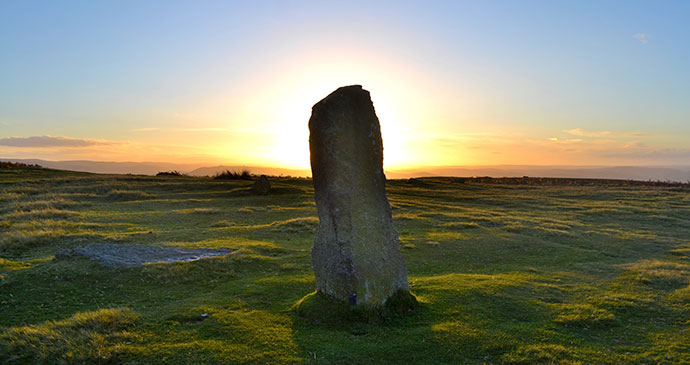
No-one is even sure of the origin of the name. One local legend concerns a good fairy who bestowed the villagers with a magical dun cow. She promised that the cow’s milk would never run dry, as long as everyone took only one bucket of milk each day.
Naturally a wicked witch ruined everything by pumping the cow’s milk into a sieve. When the cow realised the witch’s trick she ran away, never to be seen again. As punishment, the fairy turned the witch to stone and made the stone circle in which to imprison her forever.
Duddo Stones, Northumberland
Like giant fists thrust from the ground, the five stones that form this Bronze Age circle on a hilltop a few miles north of Etal date from around 2000BC and stand between five- and ten-feet tall. They look most striking late in the afternoon when the sun picks out the grooves and ancient cup marks in the stones.
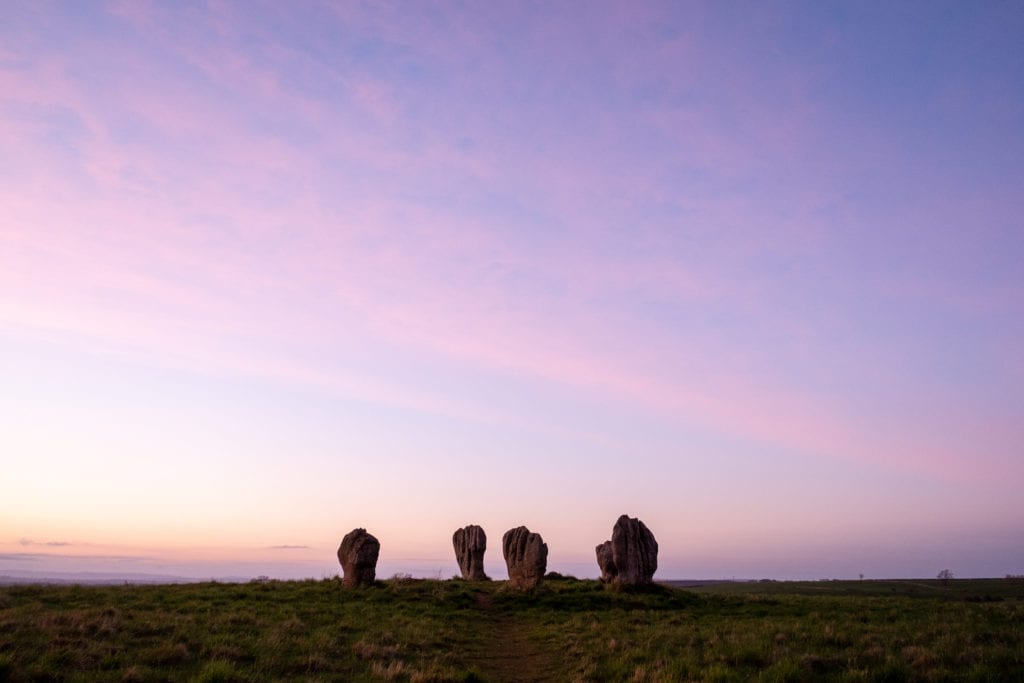
Human remains were excavated from the central area in the late 19th century, suggesting the site had mythical or sacred value, as is common with stone circles elsewhere. Duddo Farm permits access to the stone circle, which is signposted from the village and takes about half an hour to reach.
Callanish Standing Stones, Outer Hebrides
Evocative, haunting and believed to be older than both Stonehenge and the Pyramids of Giza, the standing stones of Callanish are quite magical. Hewn from otherwise undentable Lewisian gneiss, a central monolith some 12 feet high is surrounded by a circle of 13 stones, while lines or avenues of other stones lead away to all points of the compass.
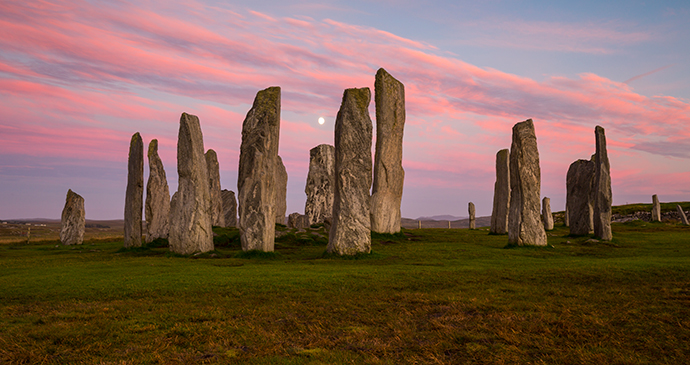
There’s a graceful symmetry to the site, enhanced by the patterning of the gneiss visible on the rough-cut surfaces of the stones. The gneiss stones are fine grained, pea-green, as thin as a finger in places but – please don’t try this, just in case – utterly unsnappable.
Avebury Stone Circle, Wiltshire
The colossal sandstone boulders comprising a great circular henge and two intersecting stone circles lie within a massive earthwork rampart enclosing about 28 acres. The circles are the largest of their kind in Europe. Sadly, though, you might notice that several of the stones are missing. Thanks to William Stukely, the 18th-century President of the Antiquarian Society who continued Aubrey’s work and charted the stones’ positions, it is at least known where they stood.
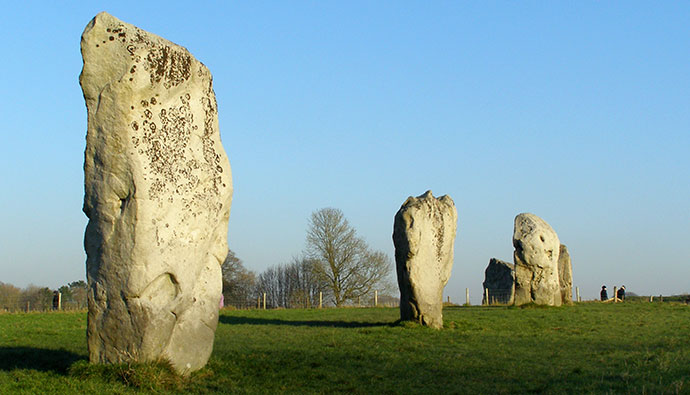
Vandalism of the stones probably started in the Middle Ages, when superstitions about the ‘Druid circle’ led people to crack them by lighting fires. The skeleton of a barbersurgeon, along with his lance and scissors was found, many centuries later, beneath one toppled stone. But Stukely recorded where many of the original stones had stood, and a concrete post now marks each gap.
Long Meg and her Daughters, Cumbria
Were it not for her gender, Long Meg would certainly have to answer charges of being gratuitously phallic. She is a former witch, now an 11ft standing stone about 27yds from her similarly petrified coven of offspring (or lovers, according to some), who form one of the largest stone circles in Britain.
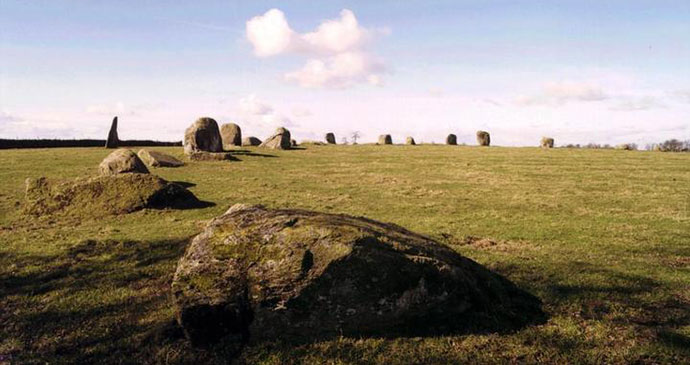
One legend tells how all of them were turned to stone by a Scottish wizard called Michael Scott. A twist in this story is that it is unaccountably hard to count them. Impossible even. If anybody can reach the same figure in two attempts, then Scott the Scot’s spell will be broken and the stones will revert to being witches.
Stanton Drew, Somerset
Unlike its far more famous counterparts at Avebury and Stonehenge, you won’t find hordes of day trippers piling into the village of Stanton Drew to view its remarkable stone circles. Nor will you find the phalanx of facilities that typically accompany those more hallowed sites; payment (£1), for example, is via an honesty box – it’s all refreshingly low-key, and much Slower.

While these stones may lack the drama of the aforementioned sites, their historical resonance is not in question. In fact, Stanton Drew constitutes the third largest set of prehistoric standing stones in the country, dating broadly from around 3000–2000BC, possibly earlier.